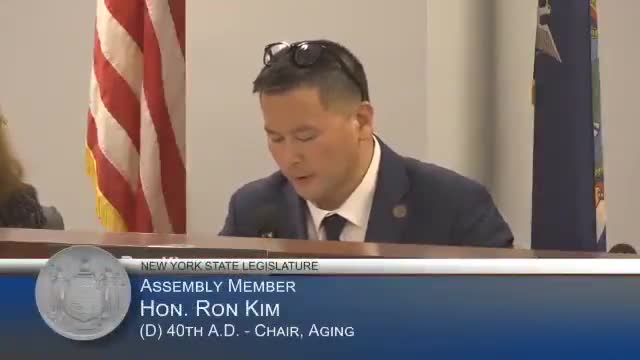New York City Aging Services Face Funding Challenges and Waiting List Issues
October 17, 2024 | Aging, Standing Committees, House, Legislative, New York
This article was created by AI summarizing key points discussed. AI makes mistakes, so for full details and context, please refer to the video of the full meeting. Please report any errors so we can fix them. Report an error »

During the recent Assembly Public Hearing on Expanded In-Home Services for the Elderly Program (EISEP) held on October 17, 2024, significant discussions emerged regarding the challenges faced by New York's aging population and the services designed to support them. A key focus was the current state of waiting lists for home care services, which vary by locality. While some areas, particularly in New York City, may have waiting lists, others in upstate counties might not, highlighting a disparity in service availability based on geographic location.
Participants emphasized the importance of a centralized data collection system for tracking service requests and needs. This system aims to ensure that even if individuals do not receive immediate services, their information is recorded for future assistance. The data collected is reported to the New York State Office for the Aging, which is crucial for understanding and addressing the needs of the elderly.
Concerns were raised about wage theft and the treatment of home care workers. Representatives assured that their organizations have not encountered such issues, attributing this to direct contracts with licensed providers who are held accountable for service delivery. However, the conversation shifted to the broader issue of staff retention, with many organizations struggling to compete with private sector wages, particularly for roles such as drivers and meal service providers.
The hearing also addressed the Master Plan for Aging, which has been in development for several years. Stakeholders expressed frustration over the requirement for budget-neutral recommendations, arguing that meaningful change requires investment. New leadership at the Department of Health has sparked hope for a more flexible approach that considers fiscal obligations, but many participants stressed the urgency of addressing immediate needs rather than focusing solely on long-term planning.
As the hearing concluded, it was clear that the funding for aging services remains inadequate. Advocates called for increased financial support to ensure that the needs of the elderly population are met and that service providers can offer competitive wages to retain staff. The discussions underscored a collective commitment to improving the quality of life for New York's seniors, with a focus on actionable solutions and the necessity for ongoing advocacy.
Participants emphasized the importance of a centralized data collection system for tracking service requests and needs. This system aims to ensure that even if individuals do not receive immediate services, their information is recorded for future assistance. The data collected is reported to the New York State Office for the Aging, which is crucial for understanding and addressing the needs of the elderly.
Concerns were raised about wage theft and the treatment of home care workers. Representatives assured that their organizations have not encountered such issues, attributing this to direct contracts with licensed providers who are held accountable for service delivery. However, the conversation shifted to the broader issue of staff retention, with many organizations struggling to compete with private sector wages, particularly for roles such as drivers and meal service providers.
The hearing also addressed the Master Plan for Aging, which has been in development for several years. Stakeholders expressed frustration over the requirement for budget-neutral recommendations, arguing that meaningful change requires investment. New leadership at the Department of Health has sparked hope for a more flexible approach that considers fiscal obligations, but many participants stressed the urgency of addressing immediate needs rather than focusing solely on long-term planning.
As the hearing concluded, it was clear that the funding for aging services remains inadequate. Advocates called for increased financial support to ensure that the needs of the elderly population are met and that service providers can offer competitive wages to retain staff. The discussions underscored a collective commitment to improving the quality of life for New York's seniors, with a focus on actionable solutions and the necessity for ongoing advocacy.
View full meeting
This article is based on a recent meeting—watch the full video and explore the complete transcript for deeper insights into the discussion.
View full meeting
